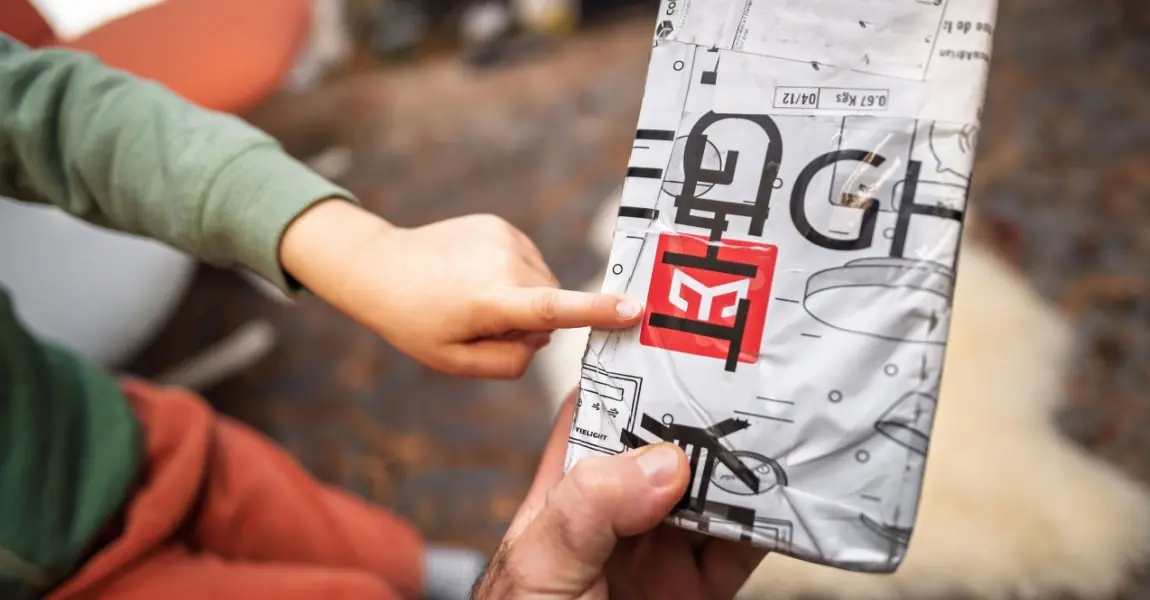
Brand packaging is in shaping customer perception and influencing purchasing decisions. It’s often the difference between a sale and a missed opportunity. More than a container, brand packaging acts as a silent salesperson, representing the brand in the customer’s hands. As the first physical touchpoint, it’s a key marketing tool. Strong product packaging design protects the product and shapes how people view the brand.
At its heart, it blends brand design with storytelling. It visually communicates a company’s identity through colors, materials, and shapes. This sparks curiosity and builds connections with customers much before they use the product. Through visual branding design, packaging helps brands leave lasting impressions.
Packaging also strengthens brand identity by ensuring visual identity design remains consistent across all products. When packaging reflects the brand’s graphic design and style, it builds trust and recognition. Over time, customers associate the packaging’s look and feel with the brand, boosting loyalty.
In this article, we’ll cover why brand packaging is crucial for business growth, the key elements of effective packaging, and the various types used across industries. We’ll also explore the design process, sustainability’s growing role, and ways to make packaging stand out. Plus, we’ll discuss how to measure packaging success and highlight the latest trends shaping the industry.
Whether creating new designs or refining current ones, this guide offers insights to enhance your brand’s packaging strategy.

Why Brand Packaging Matters for Business Success
Brand packaging is essential for business success. It drives sales, builds loyalty, and differentiates brands. Acting as a silent salesperson, effective packaging grabs attention and influences purchases at the point of sale.
Consistent product packaging builds trust and reinforces brand recognition. Familiar packaging strengthens the perception of reliability, enhancing brand positioning.
Thoughtful product package design improves recall and boosts repeat purchases. Professional brand visuals make products stand out, encouraging customers to return. A brand design agency ensures packaging reflects the brand’s identity and resonates with the audience.
In a competitive market, strategic packaging solutions are crucial. Packaging protects the product and conveys brand values and quality. Prioritizing brand packaging enhances customer experience, increases sales, and fosters loyalty.
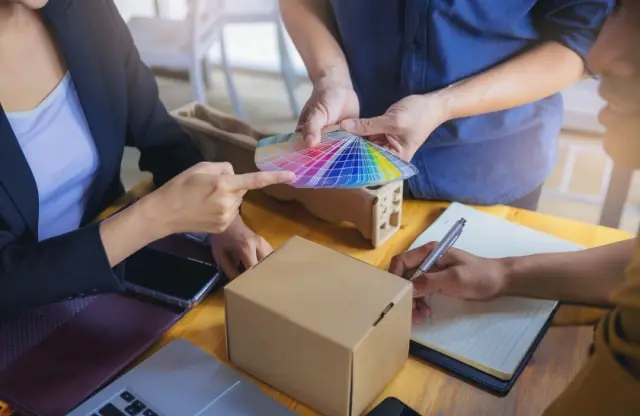
Key Elements of Effective Brand Packaging
Effective brand packaging is crucial for conveying a brand’s message and identity. Key elements include visual design, material choice, functionality, storytelling, and consistency. Each component plays a vital role in creating packaging that attracts customers, ensures brand consistency, and communicates the brand’s values.
Visual Design
The use of color schemes, typography, and logos is essential in product packaging. Applying color psychology can evoke specific emotions, influencing consumer behavior. Clear typography ensures readability, while a well-designed logo enhances brand recognition. These elements work together to create professional brand visuals that attract attention.
Material Choice
Selecting appropriate materials impacts sustainability, durability, and the tactile experience of the packaging. Opting for eco-friendly packaging solutions appeals to environmentally conscious consumers. Durable materials protect the product, and a pleasant tactile feel can enhance the unboxing experience.
Functionality
Effective packaging should be user-friendly, practical, and protective. Easy-to-open designs boost customer satisfaction. Practical shapes and sizes make storage and transportation easier. Packaging must also protect the product to ensure it arrives undamaged.
Storytelling
Packaging serves as a narrative tool to communicate brand values. Incorporating design ideas that reflect the brand’s story can create a deeper connection with consumers. For instance, using imagery or text that conveys the brand’s mission or origin can make the product more memorable.
Consistency
Maintaining uniformity across all product lines reinforces brand coherence. Following a brand style guide keeps colors, fonts, and designs consistent, building trust and recognition. This consistency also strengthens brand positioning across social media and marketing channels.

Types of Brand Packaging and Their Applications
Understanding the various types of brand packaging is essential. Especially when selecting the right packaging solutions that align with your product’s needs and brand identity. Each type serves a specific purpose, from protecting the product to enhancing brand consistency.
Primary Packaging
This is the first layer of packaging in direct contact with the product, such as bottles or boxes. It safeguards the item and often incorporates design elements like the brand logo and color palette to encapsulate the brand’s identity.
Secondary Packaging
This outer wrapping groups multiple primary packages together, facilitating easier handling and distribution. It ensures brand consistency across products and can be designed to reflect the brand’s elegance and style.
Tertiary Packaging
Used for bulk transport, this includes pallets and crates that protect products during large-scale shipment. While not typically seen by consumers, it plays a crucial role in maintaining the integrity of what’s inside during transit.
Custom Packaging
Tailored designs that reflect the brand’s personality, offering a premium experience. Creative packaging design can make your packaging stand out, enhancing brand positioning and providing a unique unboxing experience for customers.
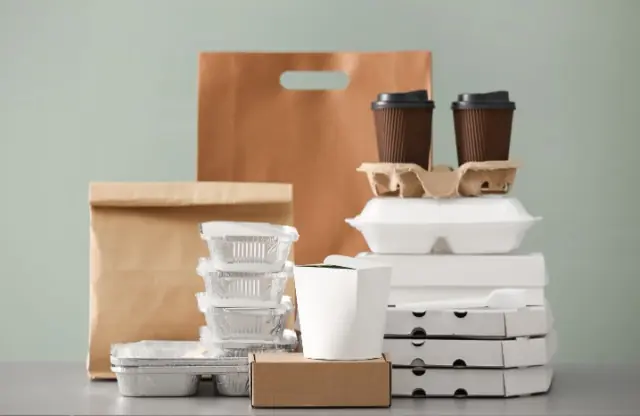
The Process of Designing Brand Packaging
Designing packaging involves several key steps to ensure it aligns with business goals and meets customer expectations. This process includes research, concept development, prototyping, feedback, and final production.
1. Research and Market Analysis
Understand your target audience’s preferences and study competitor packaging to inform your product’s packaging strategy. This research helps in creating designs that resonate with consumers and stand out in the market.
2. Concept Development
Brainstorm ideas that reflect your brand identity. Incorporate creative packaging design elements, such as illustrations and custom graphics, to encapsulate your brand’s essence and appeal to your audience.
3. Prototyping and Testing
Create prototypes to test functionality and aesthetics. Ensure the design communicates what’s inside and aligns with current graphic design trends to stay relevant and engaging.
4. Feedback and Iteration
Gather customer feedback and conduct usability tests to refine the design. Collaborate with a brand design agency to make your packaging more appealing and user-friendly based on insights gained.
5. Final Production
Partner with manufacturers to produce high-quality packaging that meets design specifications. Ensure the final product maintains brand consistency and represents your brand in the marketplace.
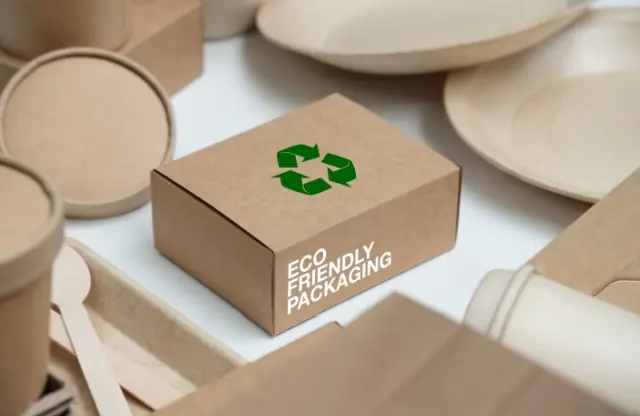
The Role of Sustainability in Brand Packaging
Sustainability is becoming increasingly important in brand packaging, offering companies a chance to adopt eco-friendly practices that benefit both the environment and their business.
Material Innovation
Brands are now choosing recyclable or biodegradable packaging materials to lessen environmental impact. This shift to sustainable packaging design helps reduce waste and appeals to eco-conscious consumers.
Reducing Waste
Adopting minimalist packaging designs cuts down on excess materials, leading to less waste. This approach not only benefits the environment but also reduces production costs.
Customer Perception
Sustainable packaging builds brand trust and aligns with consumer values. Customers are more likely to support brands that show environmental responsibility, enhancing brand loyalty.
Compliance and Regulations
Staying ahead of industry standards and legal requirements is crucial. Implementing sustainable packaging practices ensures compliance and positions brands as leaders in environmental stewardship.

How to Enhance Brand Packaging to Stand Out?
Enhancing brand packaging is essential for creating memorable customer experiences and boosting engagement. By focusing on unique unboxing experiences, personalization, innovation, and timely designs, brands can distinguish themselves in a competitive market.
Incorporate Unique Unboxing Experiences
Design packaging that builds anticipation and delight during unboxing. Thoughtful design elements can evoke excitement, encouraging customers to share their experiences online, thereby amplifying brand reach.
Add Personalization
Tailor packaging to resonate with different customer segments. Personal touches, such as customized messages or designs, can strengthen the brand experience and foster a deeper connection with the target audience.
Leverage Innovation
Integrate technologies like augmented reality (AR) or QR codes into packaging to offer interactive experiences. These features can enrich the brand story, providing customers with engaging content that enhances their connection to the brand.
Limited Edition and Seasonal Packaging
Introduce special packaging for limited-time offers or seasonal events. This strategy keeps the brand fresh and aligned with current trends. It also entices customers to make purchases before the unique packaging is no longer available.

Measuring the Success of Brand Packaging
Measuring the success of brand packaging is essential to understanding its impact on sales and brand perception. By analyzing sales data, gathering customer feedback, monitoring social media engagement, and conducting A/B testing, brands can assess and enhance their packaging strategies.
Sales Data Analysis
Examine sales figures before and after packaging changes to identify trends and measure the impact on revenue. This analysis helps ensure your packaging resonates with the target audience, supports brand uses, and drives purchases for a great product.
Customer Feedback
Gather insights through surveys and reviews to understand consumer opinions on packaging. Positive feedback shows the packaging makes a strong impression, while constructive input provides opportunities to develop your brand and refine its appeal.
Social Media Engagement
Track user-generated content related to your packaging on social platforms. High engagement indicates that your packaging aligns with your brand strategy and connects with your target audience.
A/B Testing
Conduct A/B testing by showcasing different packaging designs to selected audience segments. Comparing results helps identify which design enhances the brand experience and makes the strongest impact, enabling you to refine your packaging approach.
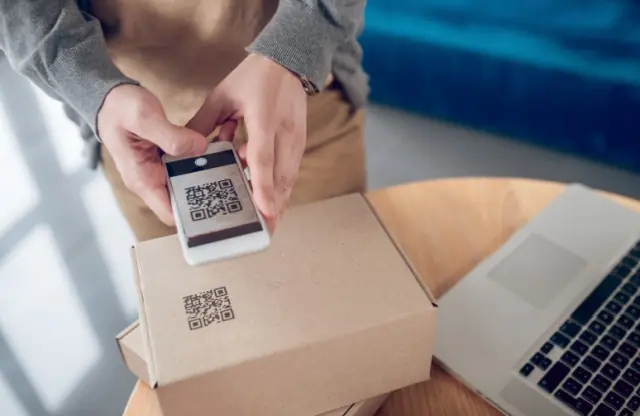
Brand Packaging Trends to Watch
Staying informed about the latest brand packaging trends is essential for maintaining a competitive edge. Current trends emphasize simplicity, technological integration, bold aesthetics, and sustainability.
Minimalist Designs
Minimalist packaging is becoming popular for its elegance and simplicity. Brands often use plain boxes with subtle visual branding design elements to enhance brand identity. This appeals to consumers who prefer straightforward and honest presentations.
Smart Packaging
Smart packaging, integrating technologies like QR codes or NFC tags, is rising. These features offer interactive experiences, such as product information or promotions, boosting brand awareness and connecting physical products to digital content. Check out these innovative packaging trends for some cool ideas.
Bold Colours and Unique Shapes
Use bright colors and unconventional shapes to grab attention. These designs create a strong visual impact, helping products stand out and reinforcing brand identity with memorable custom illustrations.
Sustainable Innovations
Eco-friendly packaging is now a consumer expectation. Brands are adopting sustainable packaging designs with recyclable or biodegradable materials. This resonates with eco-conscious consumers and highlights a brand’s commitment to responsible practices.

Stand Out with Better Brand Packaging from Synapse
Investing in brand packaging is essential for business success. Packaging is a critical marketing tool that keeps your brand memorable and relevant. It protects the product while enhancing brand identity and customer satisfaction. Effective packaging blends functionality with aesthetics, leaving a strong impression on consumers.
Consistent, innovative designs strike the right balance between practicality and branding. They ensure packaging follows branding guidelines and appeals to your target audience. Minimalist designs, sustainable materials, or custom illustrations can elevate your brand and build trust.
To stay competitive, businesses should review their packaging strategies and adapt to evolving trends and customer needs. Professional design services can create packaging that encapsulates your brand story, boosts sales, and fosters loyalty.
Synapse, India’s top creative agency with over two decades of experience, specializes in crafting packaging that enhances brand strategy and maximizes impact. Visit our Showcase to explore our work or check out our Services for more details. Contact us via 1800 121 5955 (India), email at contact@synapse.co, or through WhatsApp. Or, fill out our Contact Form to get started.







